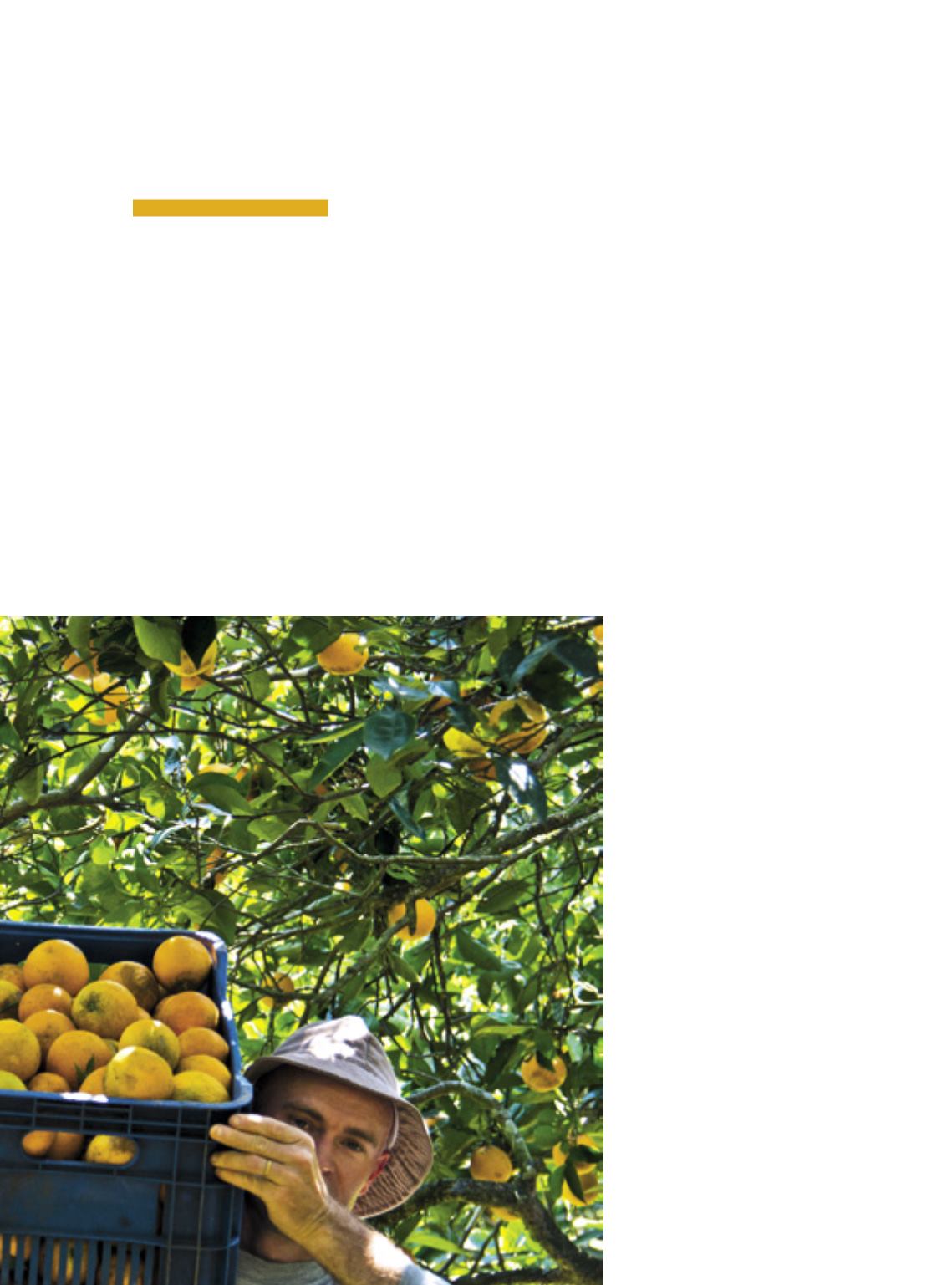
Inor Ag. Assmann
61
Supply chainhas managed
tokeep strict control
over the CVCdisease,
known as Amarelinho,
whichwas affecting
40%of the orchards
in São Paulo
The incidence of Citrus Variegated Chlo-
rosis, disease referred to as Amarelinho by
the farmers, is now present only in 3.02% of
the Brazilian commercial orange orchards,
according to a survey conducted in 349 mu-
nicipalities in São Paulo and Minas Gerais
and released in July 2016. This disease was
once the biggest threat to the orchards in the
1990s, but nowadays is it viewed as almost
extinct by the Citrus Defense Fund (Fun-
decitrus), which conducted the survey.
The CVC was first detected in orchards
in São Paulo in 1987, and at the beginning
of this century it was occurring in 40% of
the plants, and reached its peak of 43.8%
incidence in 2004. The southern macro-re-
gion of the citrus hub is still the most af-
fected, with 6.26% of the orange trees in-
fected, followed by the Northwest (5.04%),
Center and North (2%). In the Southeast,
new frontier of the citrus hub, infestations
only reach 0.16%. More intensive use of
pesticides for other diseases and pests has
also reduced the incidence of the Ama-
relinho in citrus trees.
A research network managed to map
the genome Xyllela fastidiosa, bacterium
that causes the CVC, and came up with
measures to manage the disease, trans-
mitted by tens of locust species. The in-
sects feed on xilem, the leading plant tis-
sue, acquire the bacteria and transmit
them to other orange trees. The fruits re-
main small and hard, and lose up to 70%
of their weight, and become unusable for
consumption or for industrial uses.
Keep informed
The Citrus Variegated Chlorosis, known
as Amarelinho, is a disease caused by a
bacterium called
Xylella fastidiosa
, which
affects all citrus varieties. Restricted to the
xylem (conducting tissue) of the plant, the
bacteria obstructs the veins that transport
fluid and nutrients from the roots to the
leaves. This bacterium is transmitted
by 12 locust species, responsible for
disseminating the CVC in all regions
across Brazil. By feeding on the xylem of
the contaminated plants, they acquire the
bacterium and transmit it to other plants.
In an orchard affected by CVC, the fruits
become hard, remain small and mature
early. The production of the orchard drops
fast. As no effective manner has been
detected for controlling
Xylella fastidiosa
,
the main recommendation for the citrus
growers is to manage the disease in the
correct manner, based on three strategies:
healthy seedlings, trimming the branches of
two year old plants that show symptoms of
the disease and eradication of new plants
and control over the locusts.
Victory at any
cost


